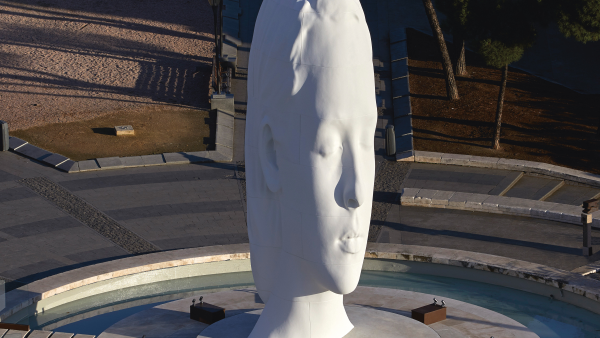PEDESTAL IN PLAZA DE COLÓN, MADRID
20 DECEMBER 2018
DECEMBER 2026

Image: Detail from At the Milliner’s, Edgar Degas. 1882. © Courtesy of the Thyssen-Bornemisza National Museum, Madrid.
Thanks to the patronage of the Fundación María Cristina Masaveu Peterson, the Conservation Area of the Museo Nacional Thyssen-Bornemisza has conducted a technical study for the restoration of the work At the Milliner’s (1882), a pastel on paper by Edgar Degas. The project has facilitated an in-depth analysis of the French artist’s technique and has shed light on the materials and methods employed in the creation of the work, furnishing key information.
The study has revealed the similarities of this pastel with other compositions that Degas made on the same theme during the same period, as well as the extreme delicacy of the material used. At the Milliner’s belongs to a series of twenty-seven works that the painter dedicated to hat shops, a subject which, together with dancers, occupies a prominent place in his oeuvre. In this case, it is one of the earliest pieces made on the theme, which enhances its value within the group.
The technical analysis included infrared reflectography (IR) and X-radiography tests. Infrared reflectograms confirmed that the work was carefully planned, with only slight corrections during the creative process, while X-radiography revealed the excellent condition of the cardboard support, made from a mixture of cellulose and other particles identified in the laboratory. It was also possible to determine that the paper rests on the cardboard, rather than being affixed to it, which has favoured its stability over time.
In terms of the pastel technique employed by Degas, the restorers highlight his skilled superimposition of successive layers of colour. He achieved this by applying a fixing agent between each layer to prevent the pigments from mixing together and detaching from the support. Concerned above all with preserving the matt texture and original colours of the pastel, he used a fixative specially formulated by his friend, the Italian painter and chemist Luigi Chialiva.
The analyses conducted in the museum’s laboratory identified traces of a protein substance in the work, possibly casein, which may correspond to that fixative. This discovery coincides with a patent registered in United States in 1899 by Chialiva and Jules Dupont, which describes a neutral fixative with a casein basis dissolved in water with borax and alcohol. Everything points to this being the same product that Degas used, confirming the close connection between art and science that characterised the painter’s technical evolution.
The results of the study will be exhibited as a special display in Room 33 at the Museo Nacional Thyssen-Bornemisza from 18 November 2025 until 1 March 2026.
CONTENIDO RELACIONADO
MUSEO DEL REAL SITIO DE COVADONGA
2024



